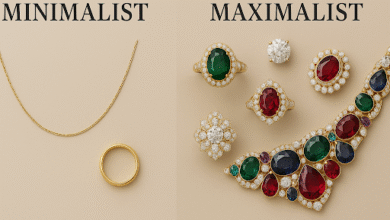Why Personalized Fashion is the New Cool: The Rise of Niche Apparel Brands

Introduction
Personalized fashion is rapidly becoming the new trend, fueled by a significant shift in consumer preferences and technological advancements. The global custom clothing market is projected to reach USD 1,895 billion by 2025, growing at a compound annual growth rate (CAGR) of 9.7% since 2020. This surge indicates a clear transition from mass-produced apparel to styles that resonate with individual identity and values.
Consumers today seek distinctive styles that reflect their unique personalities, cultures, and lifestyles. According to McKinsey’s State of Fashion 2023 report, 71% of consumers expect brands to provide personalized experiences, while 76% feel frustrated when those expectations are not fulfilled. This increasing demand is transforming the way brands design, produce, and market their apparel.
Several key factors are driving the growth of niche apparel brands.
- Technological Advances: Innovations such as 3D modeling, virtual fitting rooms, and AI-driven customization platforms empower consumers to co-create their garments with ease and precision (Deepwear, 2024).
- E-commerce and Social Commerce Growth: Online fashion sales are projected to exceed $1 trillion by 2025, with e-commerce expected to represent 24% of the fashion retail market by 2026, as reported by Best Colorful Socks. Social commerce platforms, particularly Instagram and TikTok, are enhancing niche trends and allowing smaller brands to connect with targeted audiences cost-effectively.
- Sustainability and Longevity: Personalized items tend to remain in wardrobes up to 50% longer than mass-produced alternatives, reflecting consumers’ increasing emphasis on sustainability and meaningful consumption.
- Community and Identity: Niche brands leverage subcultures and cultural pride to forge strong emotional connections and foster loyalty among consumers. For instance, the market for niche styles such as functional wear, national trend apparel, and cyberpunk fashion is experiencing rapid growth, with certain segments projected to expand at rates exceeding 9% annually.
- Mass Customization: Unlike traditional mass production, mass customization empowers consumers to become co-creators, thereby reducing waste and enhancing satisfaction. This approach resonates with eco-conscious consumers and is facilitated by digital platforms that make personalization more accessible.
In summary, the popularity of personalized fashion is driven by a confluence of consumer desires for uniqueness, technological innovation, sustainability concerns, and the amplification of social media. Niche apparel brands that embrace these trends are not only winning the hearts of consumers but also capturing significant market share in the evolving global fashion landscape.
The Growing Demand for Personal Style
We are living in an era where self-expression reigns supreme. Gone are the days when following mainstream trends was the ultimate goal. Now, we collectively crave authenticity and distinction, driving the demand for fashion for individuality.
Consumers Want to Stand Out
As consumers, we are increasingly seeking items that genuinely reflect our personalities. It’s not just about what we wear; it’s about expressing ourselves through our clothing. This demand for uniqueness is not merely anecdotal; custom trends are growing at an estimated rate of 30% annually, according to Statista.
Consider PodLyft, a burgeoning Indian streetwear microbrand. They have captured the attention of Gen Z and Millennial consumers by creating apparel that allows individuals to express the causes they believe in, ranging from mental health awareness to sustainability. Instead of relying on generic logos, PodLyft’s designs promote bold and deeply personal expression. Their approach exemplifies how consumers seeking uniqueness are transforming the market.
The Rise of Millennial and Gen Z Buyers
Younger shoppers, particularly Millennials and Generation Z, fundamentally prioritize authenticity and self-expression. Studies indicate that approximately 70% of Generation Z prefer to purchase from brands that align with their identity. Experts often emphasize that this emphasis on authenticity serves as a significant driver of brand loyalty. This trend points towards personalized clothing as a fundamental consumer expectation.
Benefits of Niche and Personalized Brands
The appeal of indie clothing brands and boutique clothing companies goes beyond mere novelty. They provide unique advantages that larger, mass-market brands often find difficult to replicate.
Unique Selling Points
Limited editions are a hallmark of many niche fashion labels, creating an inherent sense of exclusivity. This approach fosters a higher perceived value and forges a strong emotional connection with buyers. When we discover a piece of custom apparel that is popular, it feels special, carefully crafted, and truly our own.
A compelling example of this is PodLyft’s Cause-Based Hoodies and Sweatshirts, Printed T-shirts, and Graphic T-shirts. These items transcend mere style by making bold cultural statements and supporting social causes. Such limited-edition releases provide not only fashion but also a sense of purpose, fostering emotional loyalty and identity among buyers. This is a prime instance of how unique fashion choices are influenced by personal values.
Sustainability and Local Focus
Many small fashion brands inherently produce less waste. Their smaller scale often allows for more mindful production processes. Additionally, there is a significant emphasis on using local materials and supporting local communities, which resonates deeply with today’s environmentally and socially conscious consumers. For instance, brands like P.E Nation actively prioritize eco-friendly fabrics and sustainable practices, demonstrating how local apparel brands can pave the way for responsible fashion.
How Niche Apparel Brands are Winning
The success of niche apparel brands isn’t accidental. They employ clever strategies to connect with their audience and build strong communities around their distinct offerings.
Leveraging Social Media
Platforms such as Instagram and TikTok have become essential tools for enhancing the visibility of small fashion brands. These visual platforms enable brands to display their unique aesthetics and connect directly with potential customers. Importantly, user-generated content (UGC) plays a significant role in fostering trust and authenticity.
When customers share photos of themselves wearing a brand’s products, it serves as powerful social proof. For example, EVRYTABLE’s success largely derives from its community-driven marketing on social media platforms. This illustrates how social media and niche brands complement each other effectively.
Using Data and Customer Feedback
Savvy custom apparel popularity brands actively gather insights from their customers to create even more tailored products. Imagine Spotify-like recommendations, but for your wardrobe – that’s the direction the fashion personalization movement is heading.
Brands use data to understand preferences, predict trends, and offer truly relevant collections. Experts suggest that listening closely to customers can boost sales by as much as 20%. This feedback loop is vital for indie clothing brands to stay agile and responsive.
Here’s a quick look at the advantages of opting for niche and personalized fashion:
| Feature | Niche & Personalized Brands | Mass-Produced Brands |
|---|---|---|
| Uniqueness | High, limited runs, custom options | Low; widely available, generic designs |
| Personal Touch | Strong reflects individual style/values | Weak; targets a broad demographic |
| Sustainability | Often higher, local, less waste | Varies; often high volume, less transparent |
| Connection | Deep emotional connection with buyers | Transactional; less personal |
| Exclusivity | Highly sought-after, limited availability | Low; accessible to everyone |
| Pricing | Often premium reflects craftsmanship | Generally lower; focuses on volume |
Challenges for Niche Brands
While the landscape is ripe for small fashion brands, they also face unique hurdles that require careful navigation.
Maintaining Supply and Demand
One of the primary challenges for boutique clothing companies is managing supply and demand. Their limited production runs, which contribute to their exclusivity, can also lead to stock shortages. It’s a delicate balance: how can you manage growth and expand your reach without sacrificing the authenticity and uniqueness that initially attracted customers? This requires careful planning and often innovative production methods, such as made-to-order apparel.
Competing with Big Brands
Larger, established companies often have the resources to swiftly replicate popular styles or trends introduced by smaller brands. As a result, independent clothing brands must consistently innovate while remaining true to their core identity to sustain their competitive advantage. Their strength lies not in size but in distinctiveness and connection, ensuring that their customized clothing trends remain unique.
Future Outlook and Actionable Tips
The future of fashion is undeniably personal. Projections suggest that personalization technology in fashion will account for a significant portion of all fashion sales. Some estimates even indicate that personalized sales could make up 40% of the entire market by 2025. This points to a massive growth of personalized fashion and a continued rise of niche apparel brands.
For brands looking to thrive in this evolving market, several strategies stand out:
- Embrace Technology: Leverage innovations like print-on-demand services and AR try-ons to offer immersive and customizable shopping experiences. Online clothing customization platforms are becoming increasingly sophisticated.
- Build a Strong Community: Foster genuine connections with your audience. Share authentic stories behind your designs and involve customers in the brand journey.
- Focus on Quality and Limited Styles: Maintain exclusivity by prioritizing craftsmanship and offering carefully curated, limited collections. This reinforces the value of unique fashion choices.
- Listen to Your Customers: Continuously gather feedback and adapt your offerings based on consumer preferences. Their input is invaluable for staying relevant.
- Highlight Your Unique Story: Emphasize what makes your brand different, whether it’s your ethical production, specific aesthetic, or community focus.
The impact of custom clothes on the fashion market is undeniable, fundamentally changing fashion shopping habits and shaping the future of personalized clothing.
Conclusion
The emergence and success of niche and personalized brands are fundamentally transforming the fashion industry. As consumers, we are moving away from uniform styles and seeking authentic, unique, and often eco-friendly options that genuinely reflect our identities.
Brands that stay true to their vision, listen attentively to their customers, and embrace innovation will undoubtedly thrive in this evolving landscape. The powerful trend toward personalized clothing is not merely a fad; it represents a fundamental shift in how we approach style and self-expression, and it is here to stay.




